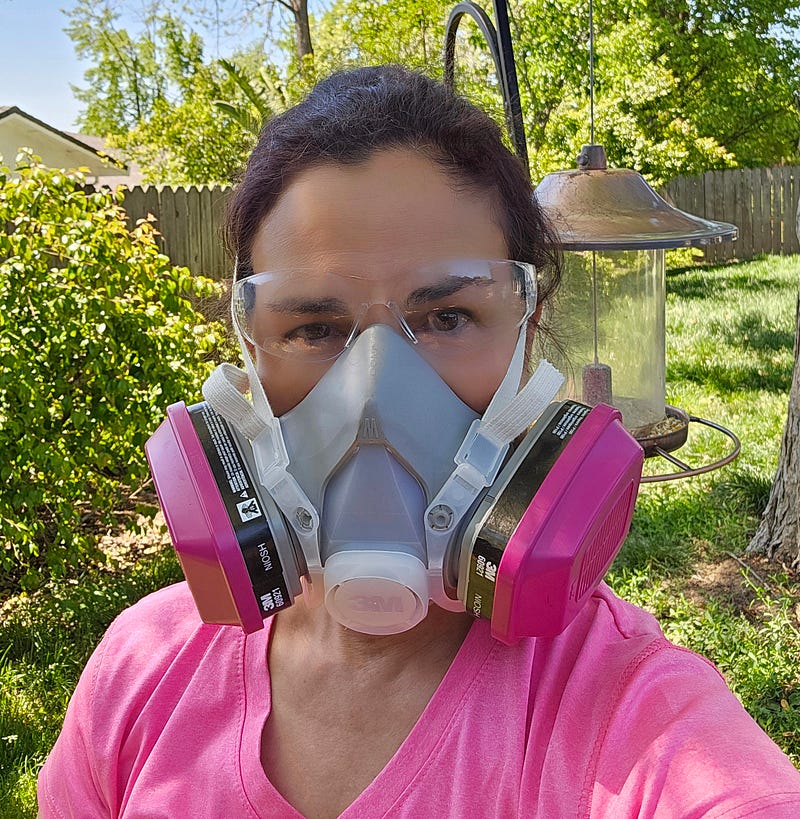Conquering Allergies: Strategies for Year-Round Relief
Written on
Understanding Allergies
You might assume that the image of me preparing to mow my lawn suggests I’m still in a pandemic mindset, but no, it’s just my defense against those pesky allergens. My preventative measures may seem amusing, yet they are essential since avoiding allergens is far better than enduring the consequences.
Having relocated to California’s Central Valley in the 1990s, I quickly became sensitized to seasonal allergies. Initially, my symptoms only emerged during the spring bloom, but over the years, they have intensified significantly.
The Challenge of Living in the Valley
In the beginning, a simple oral antihistamine like loratadine or cetirizine sufficed to manage my symptoms. However, working in a hospital, I found myself constantly battling a runny nose and frequent handwashing, which was less than pleasant. My previous homes in Chicago, Michigan, and the San Francisco Bay Area had not prepared me for the agricultural hub of the Central Valley, where an array of pollens fills the air, trapped between the Sierra Nevada and Coastal mountains.
The region's air quality is compromised, with a mix of pollen, dust, and pollutants that trigger allergic reactions. Particularly on windy days, my symptoms can escalate rapidly.

Developing a Strategy
While my eyes remain unaffected, I struggle with nasal congestion and headaches, especially during windy weather. Over the years, I’ve formulated a strategic approach to tackle these persistent symptoms.
For those grappling with similar issues, here are some practical tips to help alleviate your allergy troubles:
- Consistent Remedies: Select a treatment that you can adhere to regularly.
One effective, drug-free approach is using a saline nasal rinse. This method physically removes allergens before they can provoke severe reactions. Regular use is key, especially after exposure to known triggers.
The neti pot is the classic choice, but squeeze bottles and aerosol sprays are also effective alternatives. Always remember to use distilled or boiled water to avoid harmful pathogens.
Research offers mixed conclusions about the impact of daily rinsing on immune protection in the sinuses, but many find it beneficial for chronic sinus issues.
- Air Quality Management: Investing in an air purifier can significantly reduce indoor allergens and pollutants.
- Nasal Sprays: Non-systemic medications like nasal steroids and antihistamine sprays can effectively target symptoms with minimal side effects. While nasal steroids work wonders, they can also cause nosebleeds if used excessively.
Antihistamine sprays act quickly, though they may leave an unpleasant aftertaste.
- Oral Antihistamines: For me, a daily dose of cetirizine or loratadine is essential. These medications fit seamlessly into my routine and help control my symptoms effectively.
- Severe Reactions: For emergency situations, older antihistamines like diphenhydramine can provide quick relief, but caution is advised due to their sedative effects.
Here’s a helpful video about natural remedies for allergies that might offer additional insights.
- Pain Relief: When sinus headaches strike, I often rely on pain relievers and warm compresses to alleviate pressure.
- Addressing Eye Symptoms: While I’m fortunate not to suffer from itchy eyes, for those who do, allergy eye drops can be a good starting point.
Final Thoughts on Allergy Management
I can usually manage my symptoms, but there are times when I need to employ every strategy at my disposal, especially when my voice begins to fade. My best advice is to find a method you can consistently apply during allergy season. In the Central Valley, allergies are a year-round struggle for many, while others experience them seasonally.
Wishing you all a sneeze-free existence!
For those seeking more information on peanut allergy treatments, check out this insightful video.
For persistent or severe allergy issues, consult with your healthcare provider about prescription options, including immunotherapy or inhalers for those with asthma.
© Lilliana Méndez-Soto 2024. All Rights Reserved.